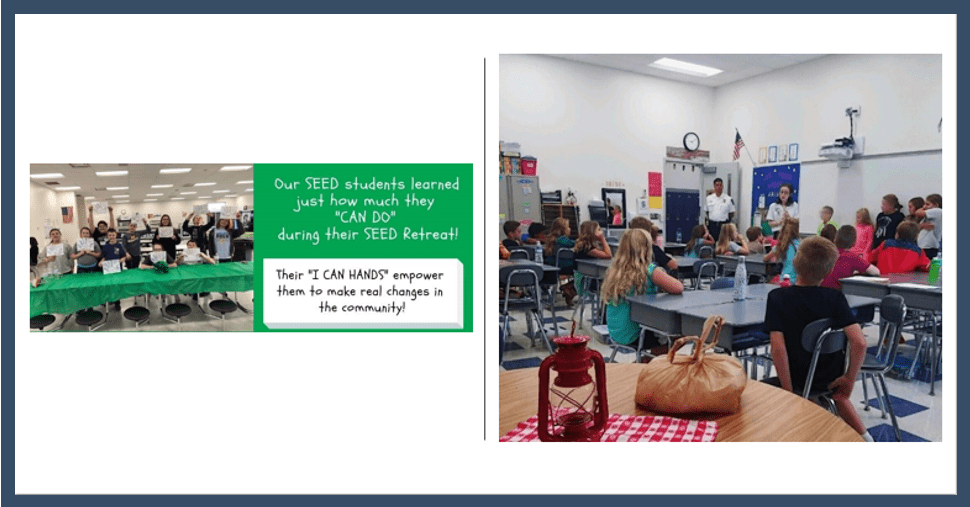
Parlez-moi de votre communauté et des communautés desservies par votre coalition – sa population et ses caractéristiques uniques. Quand la coalition a-t-elle été formée ?
Swanton Area Community Coalition was formed in response to student survey results in 2004, indicating significant use of alcohol, tobacco, marijuana and inhalants by young people in Swanton, Ohio. Swanton is considered a rural community, located in northwest Ohio. It is made up of one village (Swanton) and three townships (Swanton, Harding, and Swan Creek) with an approximate population of 14,390.
Recently, the coalition has expanded their efforts to Holland, Ohio, which is uniquely considered a rural suburban area as well. Both communities struggle getting access to public health assistance due to their proximity and jurisdiction.
À quels problèmes uniques votre coalition est-elle confrontée ?
“Swanton is divided by a county line, meaning both Fulton County and Lucas County are responsible for providing health and wellness resources to the area,” said the coalition’s executive director Andrea Smith. “This makes obtaining prevention services difficult for our target population, creating a significant need for the services the coalition provides. Additionally, each county has its own divergent view of Swanton. Lucas County sees the area as rural with limited needs and problems, while Fulton County sees that area as more urban because it is ‘close’ to downtown Toledo. These conflicting views have led to county agencies investing very little in social services, leaving the area lacking in the basic resources needed to address the prevention of substance abuse and the treatment of mental health. The only level of organized services is provided by the coalition.”
“The coalition is also impacted by the main road that runs through the community, which is used for drug transport through to the more rural areas, putting the Swanton community at risk. Additionally, the coalition struggles with local parenting dynamics. Swanton is a rural community, home to many parents who grew up around substance use and misuse, especially when it comes to alcohol and marijuana. Since most residents stay in the area, this negative behavior is passed down generationally. The cycle of normalizing substance abuse and unhealthy behaviors continues to impact our youth to this day.”
De quelle activité ou programme votre coalition est-elle la plus fière et/ou quelle activité aimeriez-vous que nous mettions en lumière ?
“SACC is most proud of our youth programing,” said Smith. “In the Students Encouraging Educated Decisions (SEED) program, our youth volunteer their lunchtime to meet weekly at the middle and high school level, to learn about substance misuse prevention and participate in preventative activities and exercises. In the middle school, the coalition recently created an advanced leadership team, Students Helping to Initiate Education to Lead the Fight Against Drugs (SHIELD). The SHIELD students volunteer their lunchtime twice a month to participate in a more in-depth education on the dangers of substance use and focus their efforts on creating educational opportunities for their peers, hosting community events, participating in volunteer activities, and designing youth advocacy projects with the guidance of high school SEED students.”
Comment en êtes-vous arrivé là et quels sont vos résultats ?
“SACC began collaborating with the local schools to better implement their youth programming in 2012,” said Smith. “Building trust and steady partnership with the school district at each grade level (elementary, middle, and high school) allowed the coalition to meet weekly at the middle and high school level. Most recently, the coalition was able to expand youth programming to the elementary level as well, providing prevention education to 3rd and 4e grade students once a month through a socio-economic approach in an effort to combat the normalized cycle of substance misuse behaviors at a young age.”
Quels conseils donneriez-vous à d'autres coalitions qui pourraient être confrontées à certains des mêmes problèmes ?
“The coalition understands the generational normalization of substance misuse is a common problem for rural communities across the nation,” said Smith. “To other coalitions addressing this same issue, our coalition would advise you to target the elementary age students to address the problem when skills like decision making are becoming so critical for their development. Also, SACC has come to take a socio-economic approach to better engage youth and place focus on the individual worth of each child, to motivate them to make better decisions intrinsically regardless of what others in their personal daily environment choose to do.”


